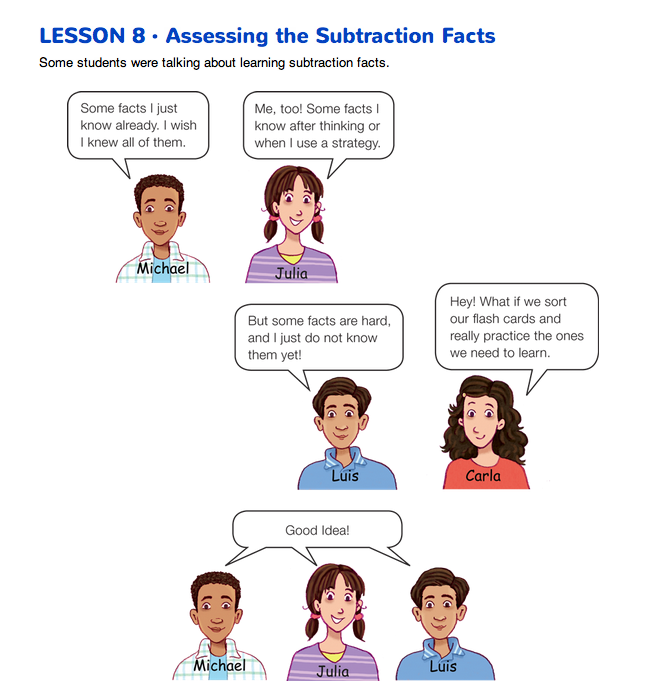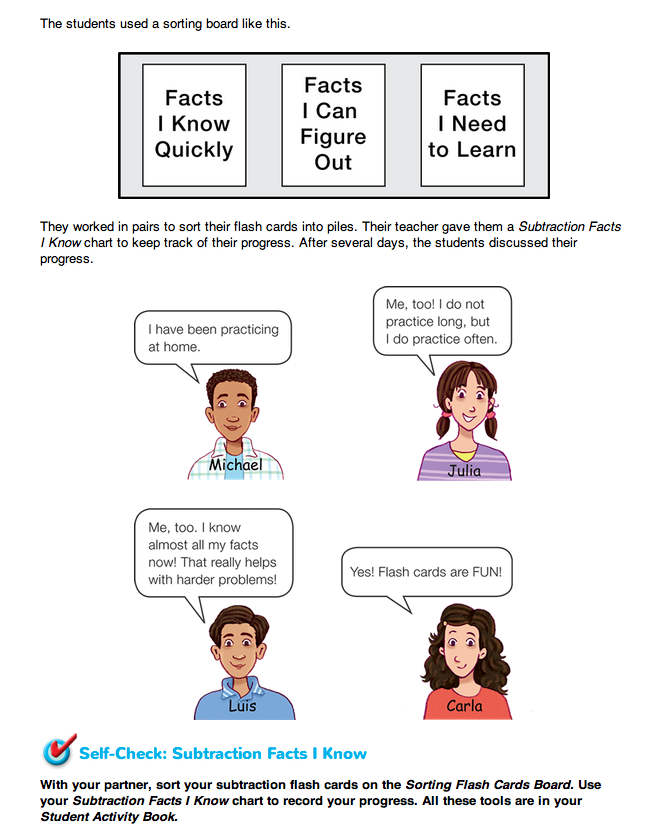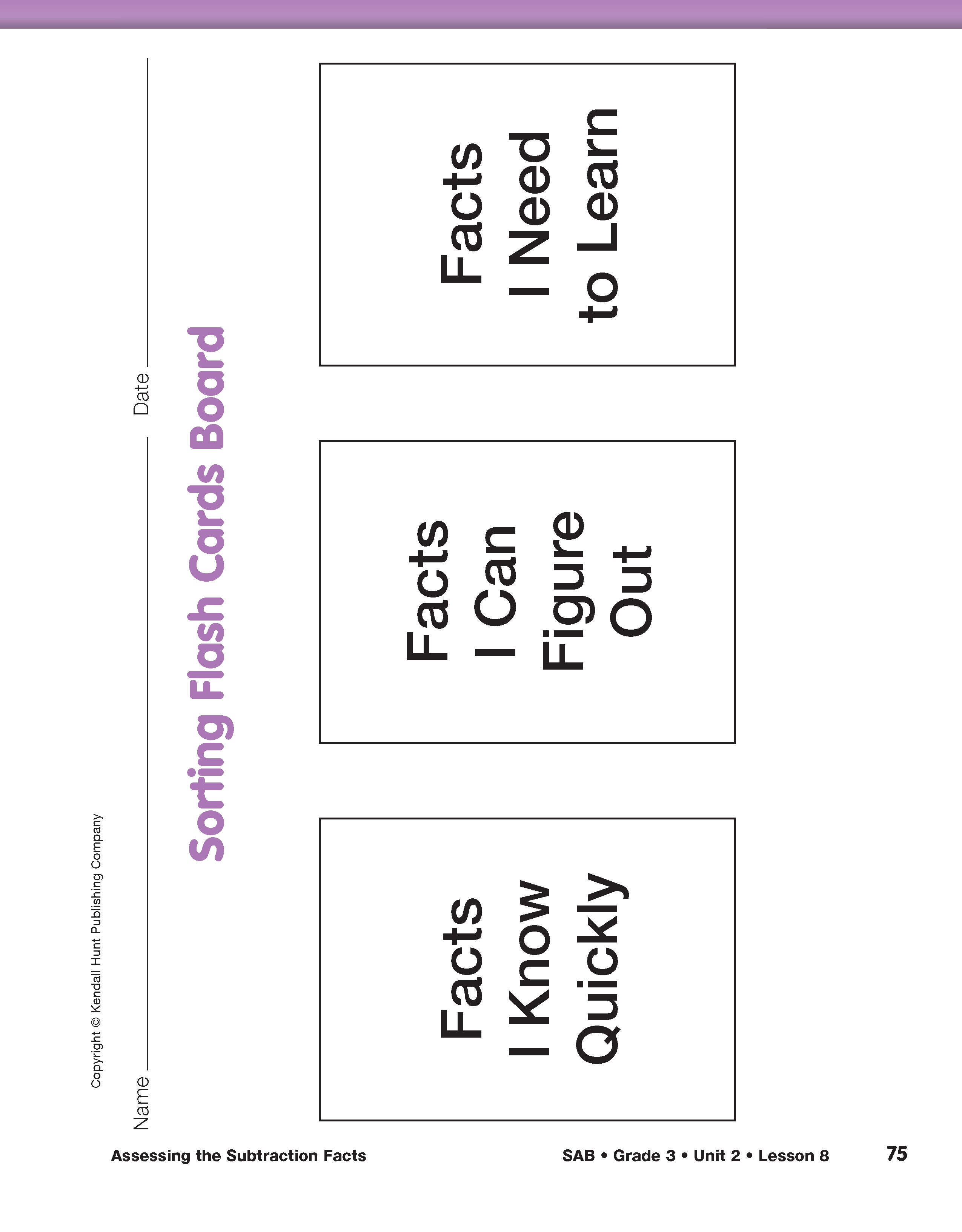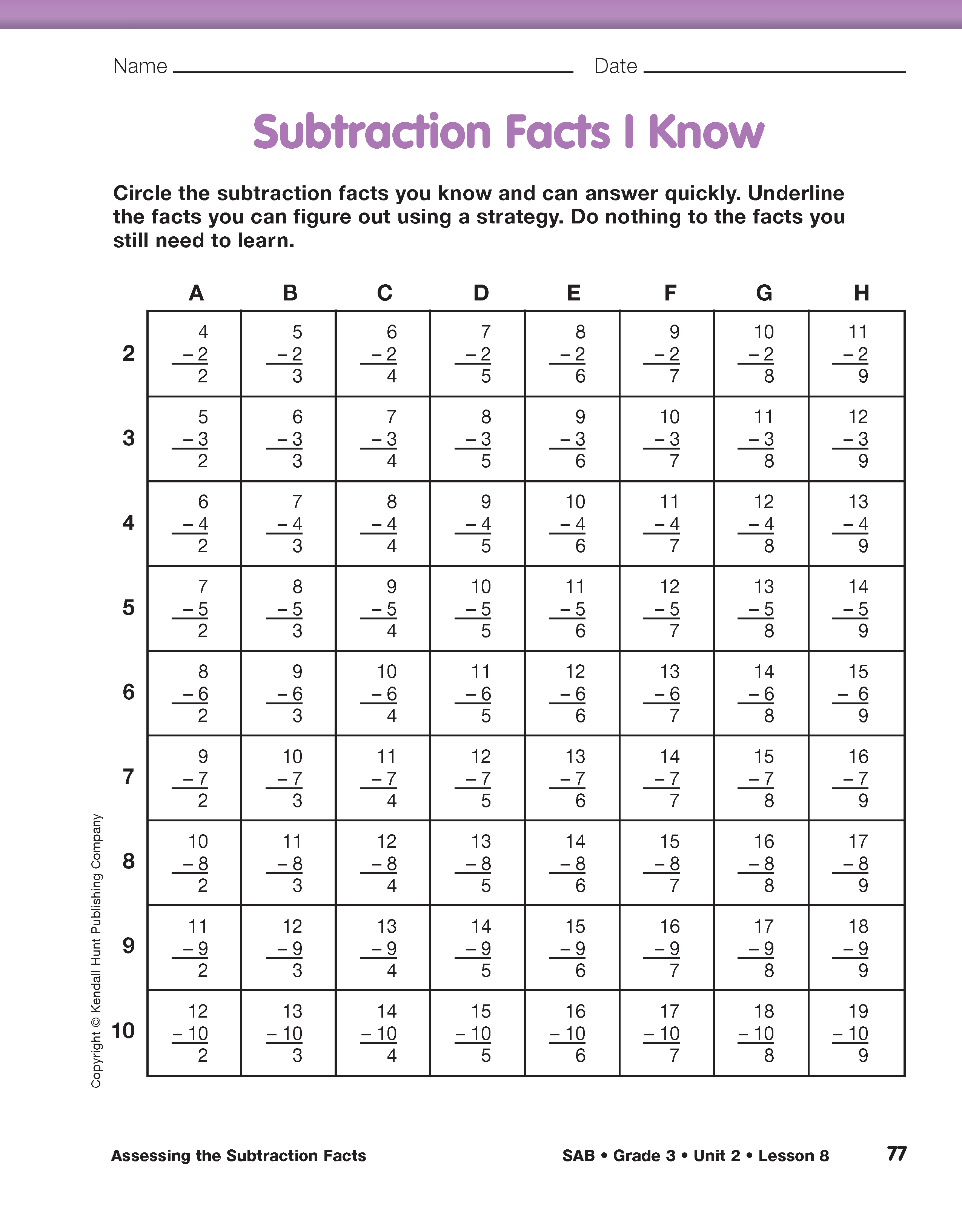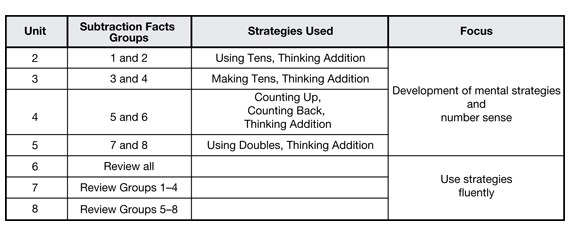Assessing the Subtraction Facts
Est. Class Sessions: 1Developing the Lesson
Share Subtraction Facts Strategies. Students discussed strategies for some of the subtraction facts from Groups 1 and 2 in Lesson 5. These strategies can be applied to the other facts in Groups 1 and 2. Display the following problems: 13 − 4, 15 − 6, 14 − 5, and 16 − 7. Without referring to strategies, ask students for the answers to the facts.
Then ask:
Sort Flash Cards. Use the Assessing the Subtraction Facts pages in the Student Guide to introduce the strategies and tools students will use to practice their subtraction facts. Distribute the Groups 1 and 2 subtraction flash cards previously prepared. Refer students to the Sorting Flash Cards Board and the Subtraction Facts I Know chart in the Student Activity Book.
The eighteen facts in Groups 1 and 2 have been grouped so students can use the subtraction strategies using-tens and thinking-addition. Have student pairs put one deck of their flash cards away so they will not get mixed with those of their partners. Direct students to hold up one flash card at a time for their partner. Students should use the Sorting Flash Cards Board to sort the flash cards into three groups. If a student gives the correct answer quickly, then the flash card is laid on the first box labeled “Facts I Know Quickly.” If he or she answers correctly after thinking through a strategy, the flash card is laid on the second box labeled “Facts I Can Figure Out.” If the student gives an incorrect answer, the flash card is laid on the third box labeled “Facts I Need to Learn.”
Share More Strategies. After students finish sorting the flash cards, discuss the strategies they used to find the differences. Validate students' use of strategies unless they are inefficient. For example, if students are counting down from 15 to 6 by ones in order to solve 15 − 9, encourage them to replace this strategy with a more efficient one, such as using tens. Class discussion of strategies helps students verbalize the number relationships and encourages them to think about the problems in new ways.
Subtraction Facts I Know. After students sort the flash cards, ask them to record their current fluency with subtraction facts on their Subtraction Facts I Know charts. Using their piles on the Sorting Flash Cards Board, students should:
- circle the facts corresponding to the cards in the stack labeled “Facts I Know Quickly”;
- underline the facts corresponding to the cards in the stack labeled “Facts I Can Figure Out”;
- do nothing to the facts corresponding to the cards in the stack labeled “Facts I Need to Learn.”
As students encounter all eight groups of facts in the Daily Practice and Problems, they should update their information on the chart by circling those problems they learn to answer quickly and underlining those facts which they answer correctly after thinking.
To acquaint students with the Subtraction Facts I Know chart, ask students to look for patterns. Possible patterns include:
- the top numbers in each row get larger as you read from left to right;
- the top numbers in each column get larger as you read from top to bottom;
- all the subtraction facts which begin with eleven are in a diagonal that begins at the top right corner;
- the number to be subtracted is the same throughout each row;
- the differences increase by one as you read from left to right in each row.
A pattern the students might miss is the pairing of the related subtraction facts. Ask students to look carefully at Row 9 and Column H. The subtraction facts in Row 9 can be paired with the subtraction facts in Column H.
Ask:
Note: The problems along the diagonal from the top left to the bottom right are paired with themselves; that is, they are doubles.














